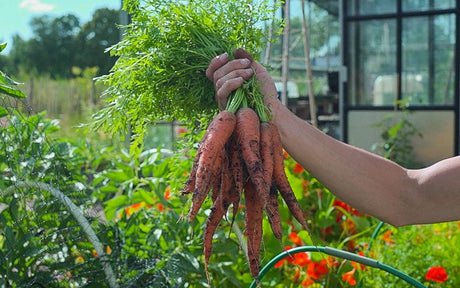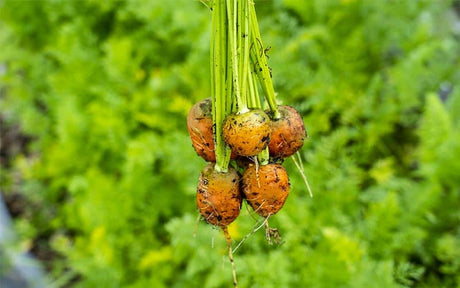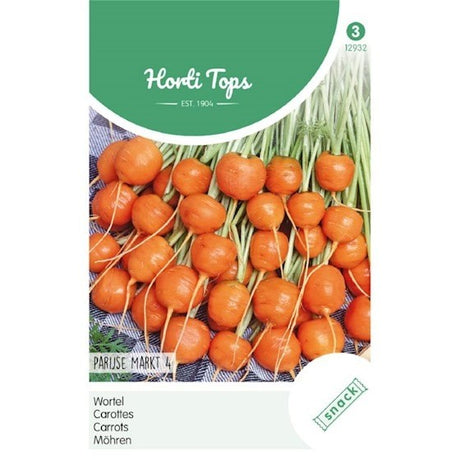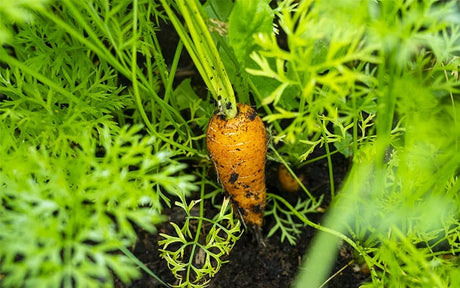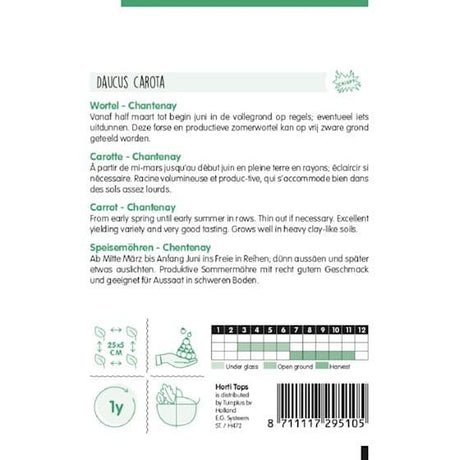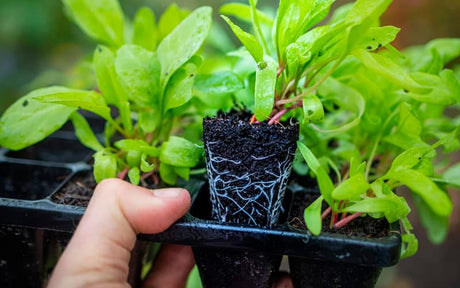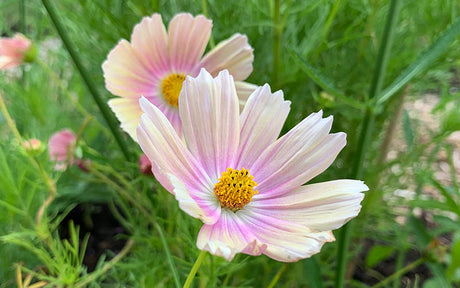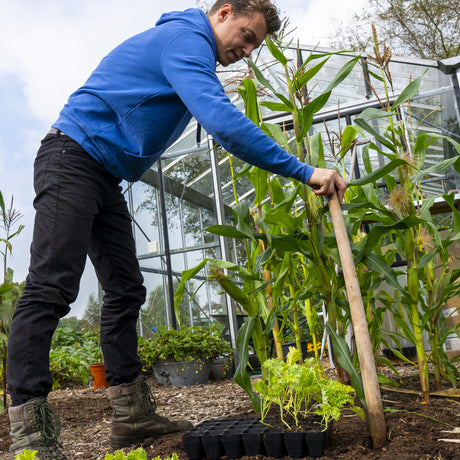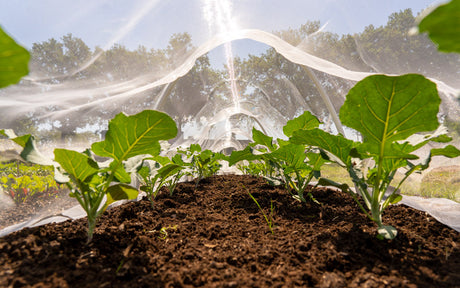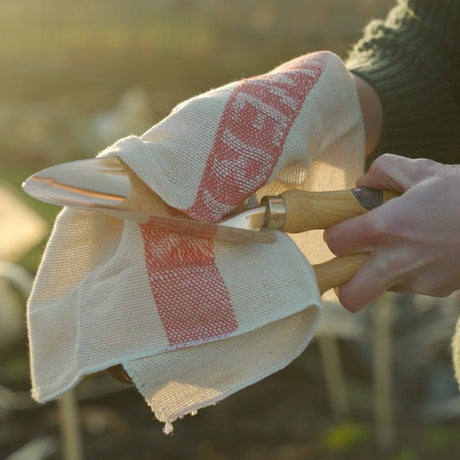Carrots are a beloved root vegetable known for their versatility and sweet, earthy flavor. Growing carrots successfully requires understanding their preferences for soil and space, but the reward of harvesting your own crunchy carrots is worth the effort. Dive into our specialized guide to master the art of growing carrots, from choosing the right seeds to enjoying their vibrant flavors in your meals.
- 1,75Unit price /Unavailable
- 1,95Unit price /Unavailable
- 1,95Unit price /Unavailable
Cultivate Crunchy, Sweet Carrots Perfect for Every Garden
Essential Tips for Growing Healthy Carrots
Carrots demand well-drained, sandy soil free from stones and debris to avoid malformed roots. They thrive in cooler temperatures but need full sunlight to develop their full flavor and color. Here's how to get the best results from your carrot crop:
Soil Preparation
Carrots enjoy a loose garden bed. We don't recommend tilling the bed but you can rake the top layer to ensure the soil is loose and free of clumps and rocks. If your soil is heavy or clayey, consider growing carrots in raised beds or containers filled with a sandy loam mix. For no-dig growers, the garden bed might be a bit compacted, but usually due to the amount of compost added it's free of rocks and sticks.
Seed Selection and Planting
Choose carrot varieties that suit your climate and soil type. Some shorter varieties are better suited for soils with heavy clay or rocks. Sow seeds directly in the garden, lightly covering them with soil. Carrot seeds are tiny, so consider mixing them with sand for more even distribution. Space rows about 20-30 cm apart to allow for easy cultivation.
Watering and Care
Carrots need consistent moisture to develop properly. Water regularly, especially during dry spells, to keep the soil moist but not soggy. Mulching around the plants can help retain moisture and suppress weeds, which can compete with slow-growing carrot seedlings.
Thinning Seedlings
Thinning is crucial for developing well-formed carrots. Once seedlings are about 5 cm tall, thin them so they’re spaced about 3-5 cm apart. This gives each carrot enough room to grow and prevents crowding, which can lead to stunted or twisted roots. We are lazy gardeners and usually don't thin them out. This still results in great carrot harvest but some just stay really small.
Harvesting
Carrots can be harvested at any size, but flavor is often best when they are allowed to mature fully, typically 50-75 days after planting, depending on the variety. Gently loosen the soil around the carrots to pull and twist them out without breaking.
Pest and Disease Management
Keep an eye out for pests like carrot flies and root-knot nematodes. Using row covers can help protect the crop from carrot flies. Some suggest crop rotation though we've never experienced any issues with planting them in the same garden bed twice.


